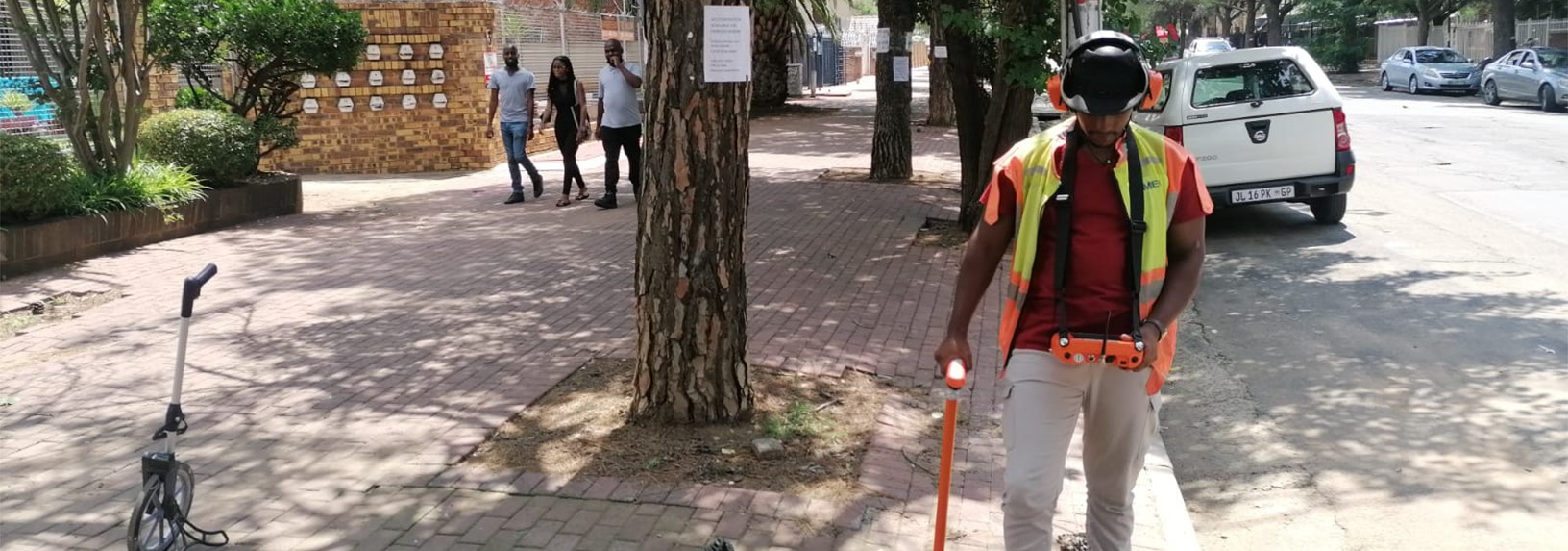

Challenge
In the heart of South Africa’s Free State province lies the Mangaung Metropolitan Municipality (MMM). The municipality spans 9,887 km2 and comprises three prominent urban centres including Bloemfontein. The metro’s ageing water, sewer and stormwater infrastructure network has resulted in frequent burst pipes, leaks, and water loss across the region, with the Minister of Water and Sanitation, Senzo Mchunu, previously stating that the metro’s loss of about 46% of its water was due to water pipe leakages.
The non-payment of water services had placed immense strain on the metro’s capacity to provide essential water resources to its residents; coupled with limited manpower to tackle existing sewerage spillages and burst pipes. Exacerbating the situation is the lack of comprehensive operational and maintenance plans for water, sewer, and stormwater infrastructure. A lack of evidence regarding the condition of problematic pipelines in the network also hindered the metro’s ability to properly asset and plan for the replacement of ageing infrastructure.
Solution
SMEC was appointed under a contract entitled ‘The Water, Sewer and Stormwater Network Condition Assessment, Impairment Investigation and Maintenance Plan Program Development project’
The project team set out to undertake robust asset condition assessments from which to develop an efficient maintenance program that would ensure the sustainable provision of vital Water services. The scope included the following spatial towns: Bloemfontein, Soutpan, Botshabelo, Thaba Nchu, Dewetsdorp, Wepener and Van Stadensrus. SMEC developed a comprehensive suite of data-driven operational and maintenance plans for water, sanitation and stormwater infrastructure within each of these areas, providing the metro with clear guidance on the required maintenance to ensure infrastructure longevity and reliability.
It was very important that the new suite of digital management tools would not burden the metro with additional yearly fees. In response to this need, the team focused on using open-source software for the GIS, such as QGIS, that will enable the metro to continue operating without expensive licencing requirements.
A key innovation introduced by SMEC was the creation of a Prioritisation Model designed to identify and plan the replacement of old infrastructure. The model performs a condition-based risk assessment of each pipeline to anticipate its condition, remaining life span and risk of failure. The pipelines are then prioritised according to their Risk of Failure Score (RFS), which is calculated by the model. A pipeline with a high RFS is given a higher priority for replacement, while a pipeline with a low RFS is given a lower priority for replacement. This enables the municipality to prioritise and plan which pipelines require replacement or maintenance in advance.
A Pipe Replacement Model, linked to a Geographic Information System (GIS) within Microsoft Excel, pinpoints the exact location of the pipe/infrastructure and categorises it as ‘high risk’ or ‘high priority’. The result is a strategic framework for infrastructure management that optimises resources and ensures critical components within the network receive the attention required, thereby allowing the metro to work proactively to minimise the number of pipe breakages and improve service delivery. The Prioritisation Model is a live system that can be updated daily as old infrastructure is replaced – a function that is driven by the Technical Department of the metro to ensure long-term sustainability.
The SMEC team utilised CCTV equipment (push rod and crawler type cameras) to inspect problematic sewer and stormwater pipes to verify the structural integrity of the pipe and/or any defects or blockages, as well as acoustic leak detection equipment to identify problematic/leaking water pipeline sections. These problematic pipe sections were identified through Delphi Sessions with the metro and this information was also populated into the Pipe Replacement Model.
SMEC also investigated opportunities to incorporate Artificial Intelligence (AI) into its workflow processes. Instead of reviewing thousands of hours of CCTV footage manually, the team created a program to train the AI tool to automatically extract relevant details from footage (video and images).
Impact
The operational and maintenance plans for the sewer and water networks were completed by SMEC in June 2022 and it is anticipated that the operational and maintenance plan for the stormwater network will be completed in mid-2024.
The tools that have been completed to date for MMM’s sewer and water network have provided comprehensive solutions to the metro’s infrastructure and asset management challenges. The outcomes across all three networks [water, sewer and stormwater] include improved maintenance planning, better asset management practices, and enhanced data-driven decision-making on infrastructure replacement/upgrading planning.
Mangaung Metropolitan Municipality
Free State Province, South Africa








